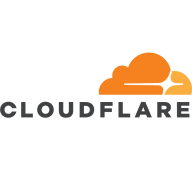


AWS WAF and F5 Advanced WAF compete in the web application firewall category, with AWS WAF seemingly having an edge due to its cloud-native nature and ease of integration within AWS services, making it more suitable for cloud-focused users.
Features: AWS WAF provides customizable rules, integrates well with AWS services, and offers fast deployment, threat detection, and geo-restriction denials. F5 Advanced WAF includes valuable features such as behavior analysis, anti-bot protection, and strong DDoS defenses, making it preferred for handling complex threats.
Room for Improvement: AWS WAF could benefit from better automation, more integrative support, and clearer billing practices. Improvements are also needed in its documentation and support accessibility. F5 Advanced WAF should enhance its user interface for easier navigation, streamline its pricing model, and offer better integration options for simplified user experiences.
Ease of Deployment and Customer Service: AWS WAF offers simplified deployment thanks to its integration with AWS services, making it attractive for cloud-based users. However, customer service receives mixed reviews regarding responsiveness. F5 Advanced WAF's on-premises setup requires experienced personnel for deployment and maintenance, with customer service being supportive but needing improvements in complex configurations.
Pricing and ROI: AWS WAF provides a flexible pay-as-you-go pricing model determined by usage, which can be costly if not monitored closely, offering good ROI for cloud-native organizations. F5 Advanced WAF is associated with higher initial costs and licensing fees, justifiable for large enterprises needing extensive security features.
WordPress security can be tricky, and that's where Cloudflare can be absolutely helpful for small businesses.
For the small project I was working on, using the basic tier provided a huge improvement at zero cost.
In terms of return on investment with Cloudflare, it costs my time to set them up, but basically once they're set up, it's done.
Subscription models offer clearer ROI due to a more competitive pricing scheme.
This would help us address issues promptly, especially during unforeseen events like DDoS attacks.
Cloudflare does not offer hands-on technical support to fix customer problems but rather a self-service model.
The key factor is the language in which the support is offered, which, in this case, is in Thai.
Resolving issues can take time because the support personnel may lack product expertise, leading to delays.
If there is a bug, the support is usually understanding and resolves issues.
I have interacted with F5's support, and while I have no major complaints, they could improve.
It is a SaaS tool, but the fact that they have workloads deployed across the world proves that it is a highly scalable tool.
The tool offers very good performance, even during high-traffic periods.
I rate the solution’s scalability an eight out of ten.
For DDoS protection, I would not recommend Cloudflare.
I rate the solution’s stability an eight out of ten.
The service is very stable with no impacts during high-traffic periods.
In terms of reliability, I would rate AWS WAF about six out of ten due to the need for improved signature sets.
There's a need for improvement in areas like AI-based DDoS attacks and Layer 7 WAF features.
Despite these challenges, overall, Cloudflare remains the preferred solution compared to Azure, AWS CloudFront, and Google Cloud Armor.
The timing aspect can lead to it being considered overpriced. This is a particular concern we have with Cloudflare, as they may struggle with accurately detecting the client.
Compared to firewalls, WAFs generally provide limited stateful analysis capabilities.
Features like bot protection or DDoS mitigation, available with other WAF vendors, do not come natively with AWS WAF.
Deployment training for F5 Advanced WAF is lacking and restricts growth by being inaccessible and costly for partners.
That's where Cloudflare shines for smaller businesses – it's ten times cheaper than Akamai.
I find it to be cheap.
I think they should consider reevaluating the pricing for support, as it can be quite high.
Due to our status as an AWS shop, AWS WAF is cost-effective for us, and we benefit from discounts due to our extensive use of AWS services.
Subscription models have competitive pricing, while perpetual licenses involve an upfront higher cost.
The price is affordable and satisfactory.
The most valuable features of the solution are performance and security.
Techniques like minification and image compression reduce the size of assets, leading to better performance and faster user load times.
The solution has been able to compare it to the market, and I think the product has taken great strides in automating quite a bit of things, and they use a lot of AI.
The cloud-native nature of AWS is crucial since most of our workload is in AWS, making AWS WAF native to Amazon Web Services.
AWS WAF is not stateful, it offers a time-saving solution with its custom rulesets that enhance security and simplify management.
The perpetual license, despite an initial higher cost, lacks transparency regarding support expiration.
It contains the logic of both negative and positive security combined.



| Company Size | Count |
|---|---|
| Small Business | 46 |
| Midsize Enterprise | 8 |
| Large Enterprise | 25 |
| Company Size | Count |
|---|---|
| Small Business | 22 |
| Midsize Enterprise | 12 |
| Large Enterprise | 25 |
| Company Size | Count |
|---|---|
| Small Business | 25 |
| Midsize Enterprise | 14 |
| Large Enterprise | 29 |
Cloudflare is a highly-regarded Content Delivery Network (CDN) and a Distributed Denial-of-Service (DDoS) protection solution. The robust global connectivity cloud platform that is Cloudflare ensures users are able to connect to the Internet quickly, securely, and reliably. Cloudflare is one of the world's largest networks in the marketplace today. Using Cloudflare, businesses, educational entities, NGOs, vloggers, bloggers, and anyone else with an internet presence can experience more secure, faster websites and applications.
Currently, there are millions of Internet locations on Cloudflare, and the Cloudflare network
continues to grow every day by the thousands. The solution is able to fulfill the requests for
millions of websites seamlessly and serves on average 45 million HTTP requests per second.
Cloudflare has safe, secure data centers in close to 300 cities worldwide to ensure every
client request is filled as quickly as possible. It is Cloudflare’s edge network that makes this
possible by keeping content and other services as close to each client as possible, so the
information requests are always only seconds away.
Many organizations that work in democracy, civil society, human rights, or the arts are able to
access Cloudflare's highest levels of protection for free via Project Galileo. Additionally, official
election websites can be secured from hacking and fraud through Cloudflare’s Project
Athenian, also at no additional cost.
Cloudflare can also help organizations of all sizes develop a robust zero-trust strategy to
ensure the highest levels of productivity and profitability. Employees, stakeholders, and end users have a greater level of satisfaction and overall improved user experience, which can, in
turn, result in higher revenues and overall ROI. Zero-trust and BYOD (bring your own device)
access ensure end users and employees always have the best resources and technology
available to them at all times.
Cloudflare benefits
Cloudflare has many benefits. Some of its most valuable benefits include:
- Faster load times
- Robust DNS security
- Intuitive cloud Web Application Firewall (WAF)
- Free universal SSL
- Image enhancement
- Automatic browser caching
- Next-generation cloud load balancer
- Accelerated Mobile Pages (AMP)
- Rate limiting
- Minification
- Zero-trust capabilities
- Cost-effective
- Reduced carbon footprint
Reviews from real users
“Many websites require an SSL certificate because they sell stuff and want SSL. Cloudflare
comes with an SSL certificate built in. It's automatic. You sign yourself up for Cloudflare, and
an SSL certificate automatically protects your website. If you have a connection between your
website and your host, the server, Cloudflare, and the host, you don't necessarily need a
certificate.” Spencer M., Owner at Tech Exchange
“What I like best about Cloudflare is that my company can use it to trace and manage
applications and monitor traffic. The solution tells you if there's a spike in traffic. Cloudflare
also sends you a link to check your equipment and deployment and track it through peering,
so it's a valuable tool.” Daniel P., Network Engineer at Ufinet
“The most valuable feature of Cloudflare is the GUI. You are able to control the solution very
well through the interface. There is a lot of functionality that is embedded in the service.” PeerSpot user, Competence Center Manager at a tech services company
AWS Web Application Firewall (WAF) is a firewall security system that monitors incoming and outgoing traffic for applications and websites based on your pre-defined web security rules. AWS WAF defends applications and websites from common Web attacks that could otherwise damage application performance and availability and compromise security.
You can create rules in AWS WAF that can include blocking specific HTTP headers, IP addresses, and URI strings. These rules prevent common web exploits, such as SQL injection or cross-site scripting. Once defined, new rules are deployed within seconds, and can easily be tracked so you can monitor their effectiveness via real-time insights. These saved metrics include URIs, IP addresses, and geo locations for each request.
AWS WAF Features
Some of the solution's top features include:
Reviews from Real Users
AWS WAF stands out among its competitors for a number of reasons. Two major ones are its user-friendly interface and its integration capabilities.
Kavin K., a security analyst at M2P Fintech, writes, “I believe the most impressive features are integration and ease of use. The best part of AWS WAF is the cloud-native WAF integration. There aren't any hidden deployments or hidden infrastructure which we have to maintain to have AWS WAF. AWS maintains everything; all we have to do is click the button, and WAF will be activated. Any packet coming through the internet will be filtered through.”
F5 Advanced WAF is a web application security solution for financial and government sectors, e-commerce, and public-facing websites. It offers protection against various attacks, including botnets, web scraping, and foreign entities. The solution can be deployed on-premises or in the cloud and is often used with other security tools. Its most valuable features include DDoS and DNS attack protection, SSL uploading, anomaly detection, and the ability to input custom rules.
F5 Advanced WAF has helped organizations to expose more services to the public while providing an extra layer of protection, preventing revenue loss, and securing connectivity.
We monitor all Web Application Firewall (WAF) reviews to prevent fraudulent reviews and keep review quality high. We do not post reviews by company employees or direct competitors. We validate each review for authenticity via cross-reference with LinkedIn, and personal follow-up with the reviewer when necessary.